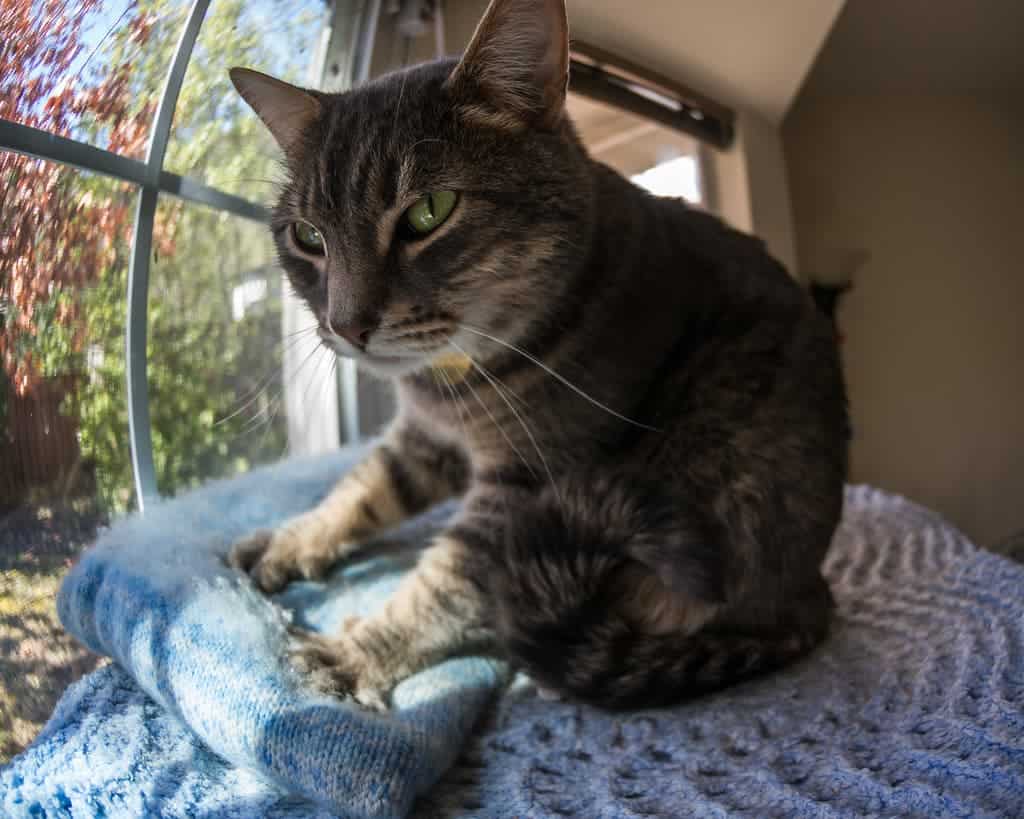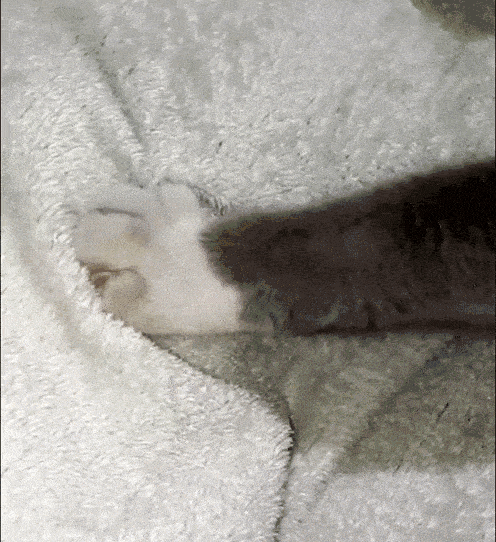If you’ve ever had a cat, you’ve probably been there. The cat sits snugly on your lap or belly, it’s all comfortable and everyone’s happy, but then it happens — the cat starts kneading; on you.
If you’ve experienced this, you probably know that no matter how much you want to accommodate the cat, it’s painful. Cats don’t realize this can hurt, they’re just feeling comfortable, but if you’re on the wrong side of kneading, it does hurt. The process can even leave puncture wounds on your skin.
According to a study, these punctures should have a name: Felis Punctatis.

Cats knead when they’re comfortable (sometimes, this is also called “making biscuits”). They do it while being petted or when they find a really nice napping spot. They often knead on soft objects like blankets, but they will also sometimes do it on other objects, like cardboard.
Sometimes, cats will also snuggle up on their owners. When they do this, they can also start kneading.
This behavior is pretty common, and so are the marks it leaves behind on the skin. In a published paper, Philip Cohen from the University of San Diego, and Douglas Ramsay from the University of Washington, Seattle, propose felis punctatis as the name for the marks left behind on the skin.
“We suggest that Latin nomenclature be used to designate the name for this claw-induced dermatosis that includes not only the causative animal (felis for cat) but also a descriptive term for the skin lesions (punctatis for punctures): felis punctatis,” the study authors note.

In the paper, the two researchers detail the case of a woman who had felis punctatis on her abdomen, caused by “repetitive insertion and withdrawal of the sharp tips of the cat’s claws”.
“The cat’s claws’ sharp tips were able to reach the patient’s abdomen through her clothing and create small skin punctures at their site of contact. Mild pain was associated with the acquisition of her lesions. All of the patient’s lesions resolved without any complications; however, since she would still allow her cat to knead on her abdomen—without any intervention to its claws—recurrence of the skin punctures has periodically occurred,” the study authors add.
The two also suspect that this process may have given the patient a mild infection. All of the punctures healed and disappeared within three weeks, and while the medical team also prescribed a topical antimicrobial treatment, the patient didn’t take it.
Ultimately, there was no big problem, but this is a reminder that as they show love and comfort, cats can sometimes cause a bit more damage than they intend.
You’re probably best off by not allowing your cat to knead on you, or placing the cat on a thick blanket or something so that the claws don’t reach your skin. If they do you may get felis punctatis.


